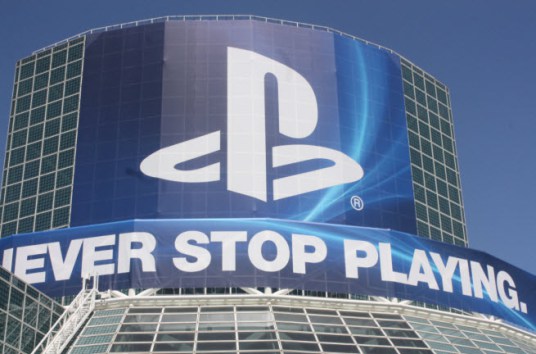Non-gamers (and increasingly, you’re an endangered species), beware. The Electronic Entertainment Expo (E3) is coming.
Each June, gamers turn their attention to the Los Angeles Convention Center in downtown Los Angeles, where E3 is held. The conference will draw more than 45,000 people, but that size doesn’t really tell you about the acreage of electronics available among the booths. And as Google recently quantified, people will be watching the news of this multibillion dollar industry from around the world on their PCs, mobile devices, and even in movie theaters.
The Entertainment Software Association (ESA) said that the Ethernet networking cables used at E3 could stretch from Los Angeles to Salt Lake City, or from New York City to Chicago. Together, these cables weigh more than two tons. The show also features 35,000 video monitors and more than 6,000 pieces of furniture. The meeting rooms and exhibits at E3 could fill nearly eight U.S. football fields, or 34 Olympic-size swimming pools, or seven White Houses.
“For us here, this is like the Super Bowl,” said Mike Gallagher, the chief executive of the Entertainment Software Association, the trade organization that represents the video game publishers. “Last year, it was definitely a hardware year, with the Xbox One and PlayStation 4 launching with record-setting commercial success. This year, we’ll see a few things on the hardware side, like Sony’s Project Morpheus and Oculus Rift. But the show will focus more on the games and developers themselves.
“Now that they have had a year to understand the hardware, you should see some pretty remarkable game experiences.”
Gallagher said E3 actually suppresses attendance to keep it at the 45,000 mark, so that the show isn’t too big or too small.
“We want it to keep to the Goldilocks standard, so it is just right,” he said.
This year, new participants on the show floor or meeting rooms include Facebook, Google, and Kabam — a all companies that aren’t part of the traditional game industry. Gallagher said the show is trying its best to include the new faces of game developers, like the mobile startups, at E3. The number of exhibitors is about the same as last year at 200.
“The growth on mobile is additive,” Gallagher said. “We do see an overall expansion of the market. It’s going to be a $90 billion, or $100 billion by other estimates, market by 2017. The new players are indicative of the growth and the value of E3. It also shows there is a lot of innovation coming from new players at the show. That just keeps the energy level sky-high.”
The trusses and hoists, used to suspend hanging decorations and lights, weigh the equivalent of 26 African elephants, 54 mid-sized SUVs, or more than seven F-18 fighter jets.
The amount of Internet bandwidth required for three days at E3 is more than most U.S. cities require in a year. The show employs more than 3,000 people during its production, including 45 network engineers who install the Internet cables.
If the total data moved over the Internet at E3 was printed on size 8.5 inch-by-11 inch paper and stacked vertically, it would be taller than the Empire State Building. Electricians use 10 miles of extension cords at E3 and five miles of duct tape.
Twitch is streaming video live from the show. Festivities begin June 9 with press conferences, and the show floor opens on June 10.
Gallagher highlighted that Glasslab (the Games, Learning, and Assessment Lab) nonprofit has worked with NASA engineers to create an adventure game in which students tour the planet Mars and learn critical thinking and debate skills at the same time.
Together, they designed the Mars Generation One: Argubot Academy, a tablet game for middle school students that transports players to the “Red Planet” in the year 2054. E3 will have a college game competition, and a full educational game conference.
He also noted that astrophysicists at the University of Massachusetts, Dartmouth, are using video game consoles to model black holes. Researchers at the Center for Scientific Computing and Visualization Research (CSCVR), combined four racks of Sony PlayStation 3’s — 176 units with associated networking gear, cables, and software — to create a makeshift supercomputer. It has the same computational power as nearly 3,000 laptops, but it operates at a fraction of the cost of a traditional supercomputer. It will help scientists simulate how rotating, supermassive black holes capture small stars.
Sadly, many games slated for this year have been pushed back to next year. Among the big games that we also see coming, based on rumor stories and previews:
- 2K Games: Evolve, Borderlands: The Pre-Sequel, and Civilization: Beyond Earth
- Activision: Call of Duty: Advanced Warfare, Skylanders: Trap Team, and Destiny
- Bethesda: The Evil Within and Battlecry
- Blizzard: Diablo III: Reaper of Souls – Ultimate Evil Edition
- Crytek: Homefront: The Revolution and Hunt: Horrors of the Gilded
- Deep Silver: Metro Redux and Homefront (copublishing with Crytek)
- Disney: Disney Infinity 2.0: Marvel Super Heroes
- Electronic Arts: Battlefield Hardline and numerous others
- Microsoft: Halo 5 (2015 title), Sunset Overdrive, Fable Legends, Project Spark, and Killer Instinct: Season 2
- Bandai Namco: Lords of the Fallen
- Nintendo: Four unannounced titles
- Sega: Alien Isolation and Sonic Boom
- Sony Computer Entertainment: Uncharted 4, Driveclub, The Order: 1886, Hohokum, and Helldivers
- Sony Online Entertainment: H1Z1, Landmark, and Planetside 2 PS4
- Square Enix: 2 unannounced games and Warhammer 40k: Eternal Crusade
- Ubisoft: Assassin’s Creed Unity, Far Cry 4, The Crew, and The Division
- Warner Bros. Interactive: Lego Batman 3: Beyond Gotham; Batman: Arkham Knight; Dying Light; Mortal Kombat X, and Middle-Earth: Shadow of Mordor
VentureBeat's mission is to be a digital town square for technical decision-makers to gain knowledge about transformative enterprise technology and transact. Learn More


